The peculiar thing about writing on Quad Royal, or to be more precise, the delving about in pursuit of a subject that I do in advance of writing, is that I quite often find myself in a place I didn’t expect to be. Take today, for example. This was going to be a quick, simple, short piece about Harry Stevens, brought about by a nice comment by Roger Lake on my last post about him (I would suggest that you follow that link, as there’s a good Albert Finney anecdote in the comments too).
Roger told me – well, us really – that there was a painting by Harry Stevens in the Salford Museum and Art Gallery called St Paul but he hadn’t Googled it yet. And he’s right – Mr Crownfolio found it for me on the BBC Your Paintings site.
From which I can also tell you that another one of his paintings is in Manchester City Galleries.
That one’s called Kite in the Sea, but you could possibly have guessed that title.
The third painting by Harry Stevens is Spirit of the South, a painting which I did know about and mentioned in the original post.
So far, so good: we now know a bit more about Harry Stevens. But then I noticed something which was more interesting than the picture (at least if you’re me) which was the clickable link to the right of the picture. A link which takes you to all the oil paintings in the National Railway Museum (NRM) collections, brought to you in a format considerably more user-friendly than their own catalogue.
So, what was going to be a short post about some Harry Stevens paintings now finds itself staring down the barrel of four hundred and eighty three paintings, all of which now need to be considered.
They are, of course, not all to our taste. People have, I can tell you, commissioned quite a few oil paintings of steam trains. There are almost as many paintings of men called Sir, too. But that still leaves quite a lot left for our consideration.
Some are from posters which I know well, like these two by Claude Buckle.
I was pleased to see that the museum owned the original artwork for this, too.
Except that it then turned out to be a much later version by Frank Newbould.
There are other paintings, though ,which are for posters that I’ve never seen, and which are really rather good. Take this 1955 Frank Sherwin image of Kent for example.
Here it is as a poster.
For a change, I think I prefer the original.
There is, I suspect, a good reason for that, and it’s one which is made explicit by the next example, Warwick Castle by Adrian Scott Stokes.
A quick surf through the NRM catalogue reveals that not only was this the only poster that Scott Stokes ever produced for the railways, he was primarily an artist (and critic) rather than a designer. In fact, this was one of a series of posters commissioned by the LMS from members of the Royal Academy. So, posters by artists, not designers. All of which probably explains why it works better as an oil painting than a printed poster.
In fact, I’d go as far as to say that I’d happily have that painting on my wall, but don’t feel remotely the same about the poster. But then none of this is surprising. Artists, generally, make better paintings than posters. If you want a poster, you may be better off with someone else, like, say a designer. But I shouldn’t be too harsh. Even if the resulting posters aren’t as good as they could be, it’s still a very interesting exercise looking at the paintings, as well as being a useful reminder that poster design is very definitely not the same thing as fine art.
Fear not, though, there are proper poster artists at work here too. Take Alan Durman. We’ve seen this design before.
There’s quite a lot of Durman’s artwork in the NRM.
For a while, I found myself getting annoyed by this. Why did they have so much of his work when the collection didn’t seem to hold a single thing by Daphne Padden or Tom Eckersley?
Until I realised that the problem didn’t lie with the museum, but with the search criteria. The BBC site only covers oil paintings held for the nation. Eckersley, meanwhile, worked in watercolour. So I need to look in the NRM’s catalogue if I want to find this.
Or indeed this.
So that’s alright then. But to go back to Alan Durman, he also provided me with another diversion. Because the webpage for his railway poster designs told me that he’d also painted this.
Which is quite a stylistic surprise. There is clearly more to Mr Durman than just dolly birds, I will investigate further one day.
The painting itself also has an interesting story to tell. It’s of Timsbury Manor, just down the road from us, and the website says:
This shows one of a variety of houses in Somerset thought to be under threat of demolition in the 1960s. Paintings of them were commissioned by Arthur Batten-Pool of Rode Manor, which he bequeathed to the Victoria Art Gallery [in Bath].
It’s a localised, and later, version of Recording Britain, which is another thing that I must write about properly one day. But Arthur Batten Pool was right; Timsbury Manor was demolished in 1961.
But that’s not the last intriguing story to come out of the paintings. Take a look at this, which is called Building Matilda Tanks at Horwich and is rather wonderful.
Now you can probably guess that it’s by Norman Wilkinson, and indeed it has a family resemblance to many of his poster designs, but as far as I can tell it isn’t one. Instead, it seems to be part of a series of paintings he produced called ‘LMS at War’. The Horwich works above were the LMS’s main engine works, now turned over to producing tanks. Here’s another one in the series, called Re-forming Shell Cases, although I can’t in this case tell what the connection is with the LMS.
I’d love to know what the story is here – did the LMS think that they might get permission to produce these as posters? The images would certainly sit very happily alongside Wilkinson’s many other designs for them. They were certainly never made into posters, in fact the only place I can find them reproduces in is a small book called the LMS at War (which crops up on eBay every so often and doesn’t sell for very much). On the other hand, I wonder whether the LMS were simply doing their own version of the Governments’s War Artists Scheme, with their own artist. The only problem with this was that the war was so directed in every way, that surely they would have had to get permission from someone? If any one knows, please do tell us all the details.
There are a lot more Norman Wilkinson paintings on the BBC site too, mostly of ships, and when I tried to find out a bit more, it turns out that he’s quite an interesting cove, and famous for quite a lot more than posters. Like inventing dazzle ship camouflage to start with. All of which probably deserves a post of its own one day.
So, I started out with Harry Stevens but ended up in the wartime engine sheds with Norman Wilkinson. Not quite what I expected. And that ought to be that, were it not for the fact that Mr Crownfolio has just suggested that I put Barbara Jones into the infernal oil painting machine. Apparently there will be results. But I think this post has travelled quite far enough for one day, I think.

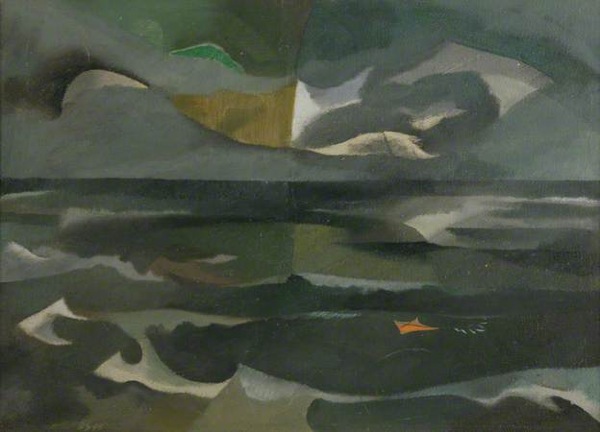
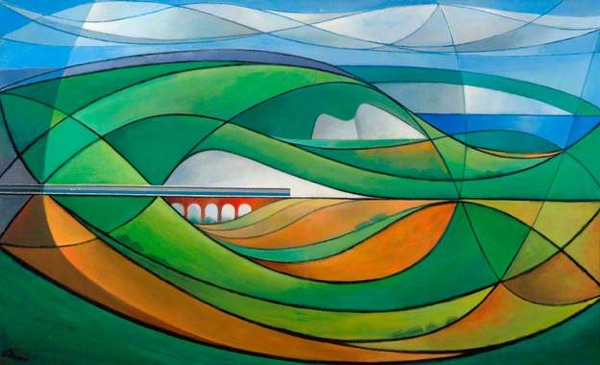
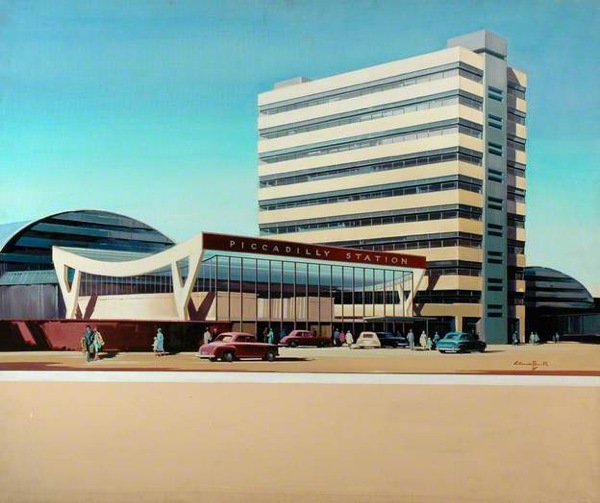
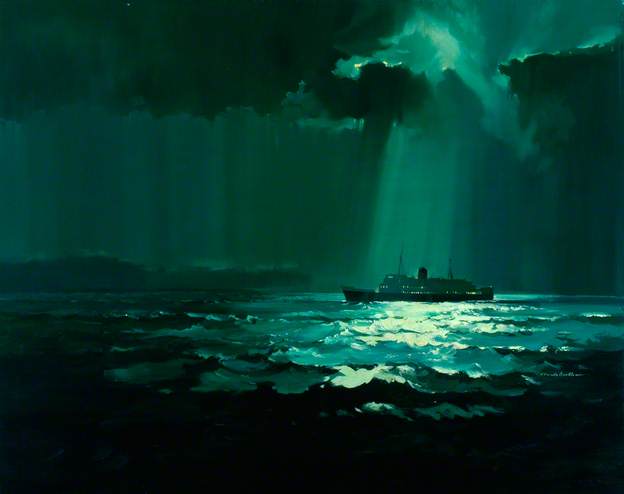
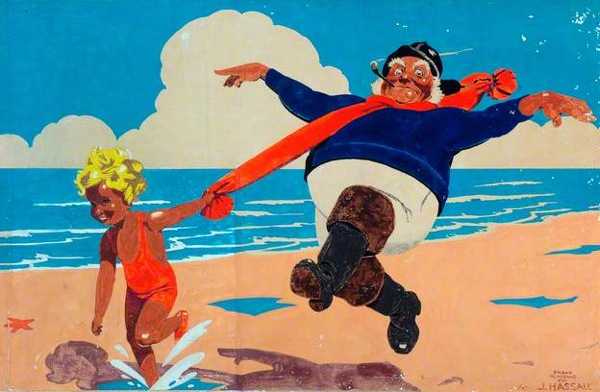
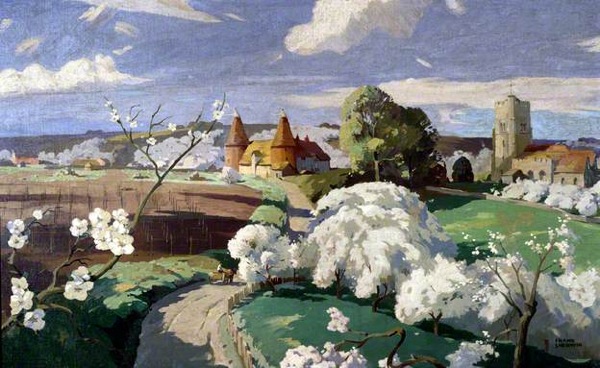
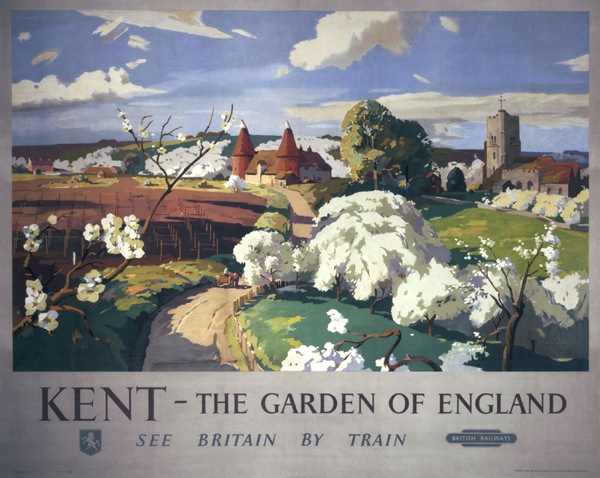
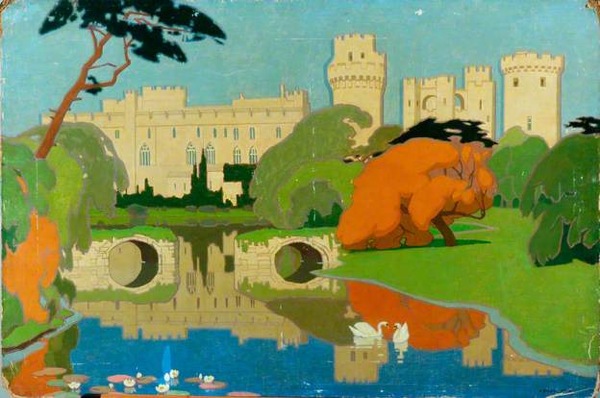
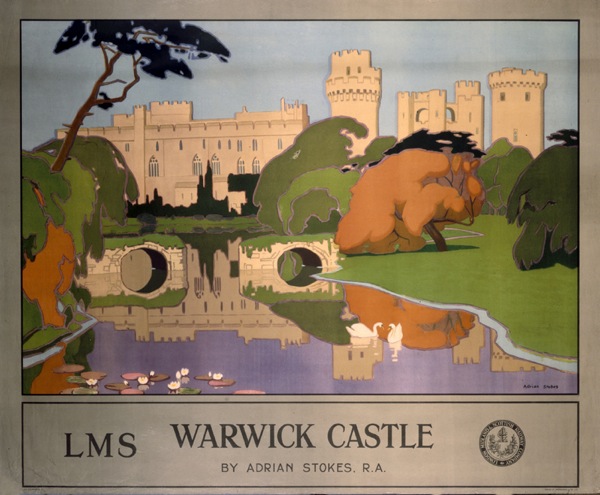
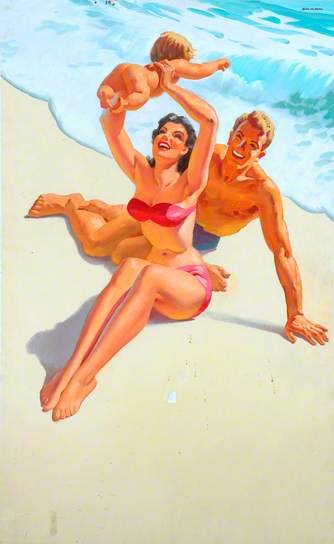
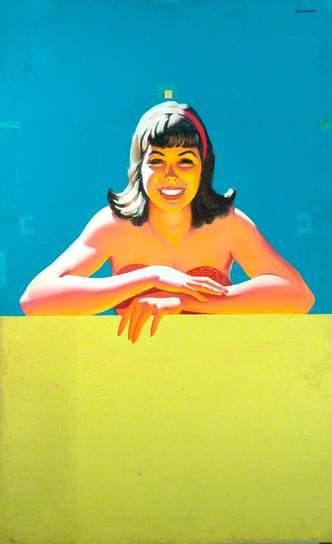
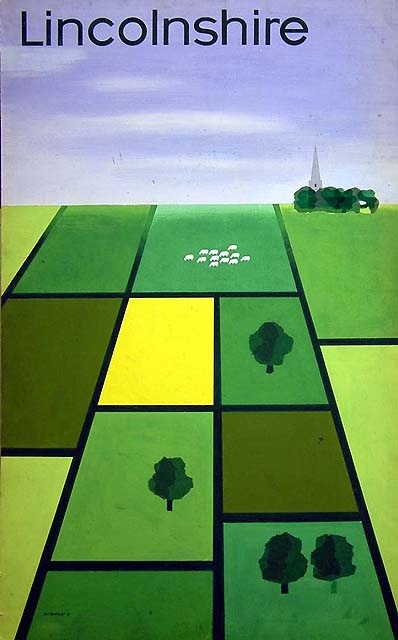
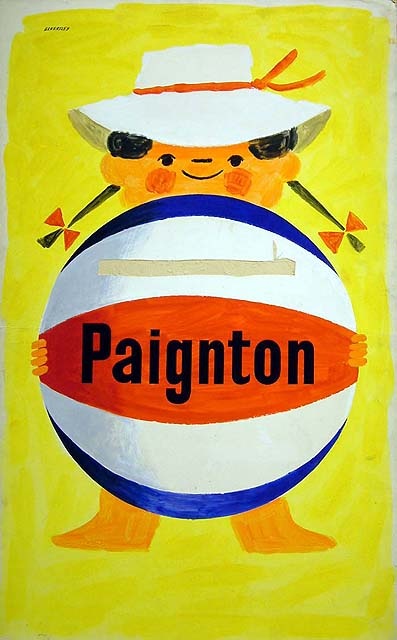
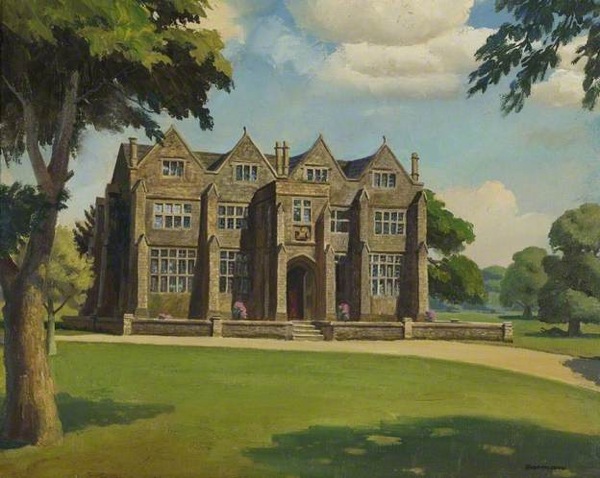
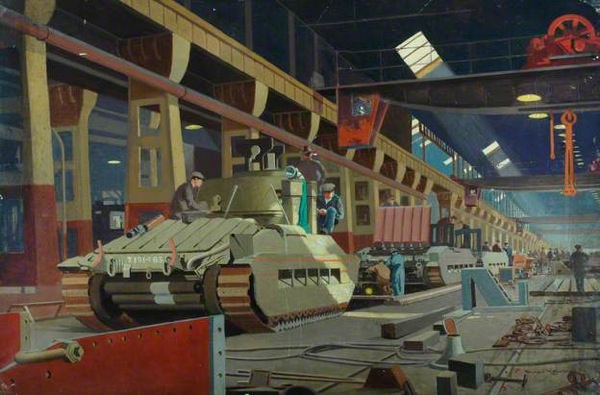
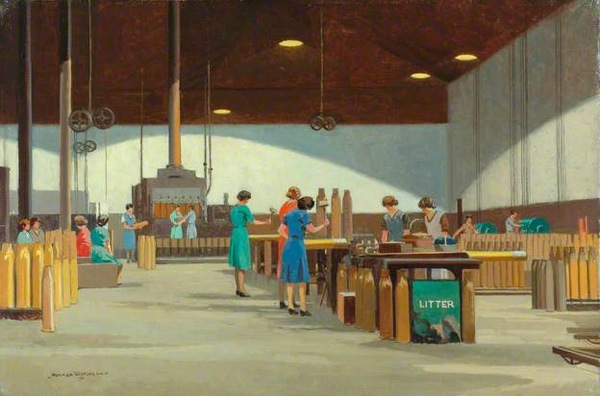
There was a booklet called LMS at War produced in 1946 with colour plates by Wilkinson – I suspect these are in it
Sorry for my inane comment – I must read posts through properly before posting a comment!
Good to know that we’ve come to the same conclusion independently though. From what I’ve seen on eBay, it’s not that exciting, so that was a lot of work by Wilkinson for not a great deal at the end.
One day, when I have leisure and money, I will go and read the LMS archives and find out what on earth they were intending with these.
Indeed the Wilkinson painting was used in the 1946 LMS at War book and here is the colour plate.
http://www.flickr.com/photos/36844288@N00/8681038699/in/photostream
Brilliant, thank you. Do you know if they ever cropped up anywhere else?
On the Harry Stevens theme…I have just seen these on ebay. You may already be familiar with them.
http://www.ebay.co.uk/itm/360637068051?ssPageName=STRK:MEWAX:IT&_trksid=p3984.m1423.l2649#ht_698wt_1161
http://www.ebay.co.uk/itm/360636941033?ssPageName=STRK:MEWAX:IT&_trksid=p3984.m1423.l2649#ht_664wt_1161
I hadn’t seen those, so thank you (I’ll only go and confuse myself if I start hanging around the film posters too). They might even deserve a post of their own…